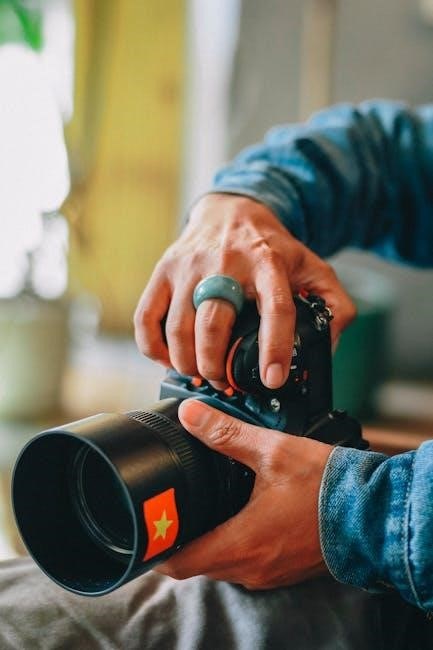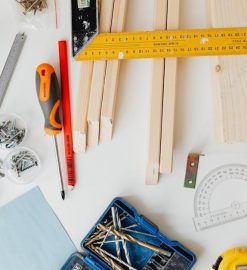retractable manual awning

Retractable manual awnings are practical shade solutions, offering versatility and simplicity. Operated by hand cranks or pulleys, they provide efficient sun protection and enhance outdoor spaces with ease.
1.1 What Are Retractable Manual Awnings?
Retractable manual awnings are versatile shade solutions designed to provide protection from the sun and enhance outdoor spaces. Unlike fixed awnings, they can be easily extended or retracted, offering flexibility based on weather conditions or desired shade. Operated manually using a crank or pulley system, these awnings eliminate the need for electricity, making them a cost-effective and energy-independent option. Typically mounted on buildings, patios, or RVs, they consist of a durable frame that holds the fabric in place when open and retracts neatly when not in use. Available in various sizes and materials, retractable manual awnings cater to different settings and preferences, providing a practical and efficient way to manage shade without complex systems.
1.2 Brief History and Evolution
Retractable manual awnings trace their origins to ancient civilizations, where fabric shades were used to protect against the sun. The word “awning” itself comes from the Arabic term “udhun,” meaning “shelter.” In ancient Egypt and Greece, cloth canopies were employed to shade public spaces. By the Middle Ages, awnings became common in marketplaces to shield goods and people. During the Renaissance, they began appearing on homes, particularly in Italy. The 19th and 20th centuries saw advancements in materials and mechanisms, leading to more functional designs. The term “retractable” emerged in the mid-20th century, emphasizing ease of use. While motorized options gained popularity, manual awnings remained favored for their simplicity and reliability. Today, they continue to evolve with improved fabrics and adjustable features, blending timeless functionality with modern practicality to meet diverse shading needs.

Design and Functionality
Retractable manual awnings feature a simple mechanical system with hand cranks or pulleys. Extended side rails offer larger shading areas, ensuring ease of use and adjustable shade control.
2.1 Components of Manual Awnings

Manual awnings consist of durable fabric, a sturdy frame, and a manual mechanism. Key components include side rails, retractable arms, and spring-loaded rollers. The fabric is UV-resistant, while mounting brackets ensure secure installation. A hand crank or pulley system allows easy operation. These parts work together to provide reliable shade and weather protection, ensuring longevity and functionality.
2.2 How Manual Awnings Work
Manual awnings function through a straightforward mechanical process. Users operate a hand crank or pulley system, which engages spring-loaded arms to extend or retract the fabric. The arms are securely attached to the structure via mounting brackets, ensuring stability. As the crank turns, the rollers move along the side rails, smoothly rolling the fabric out for shade or back for storage. This simple, energy-independent mechanism allows precise control over the awning’s position, providing effective sun protection and enhancing outdoor spaces with minimal effort. The design ensures durability and ease of use, making manual awnings a practical choice for various settings.
2.3 Types of Retractable Manual Awnings
Retractable manual awnings come in various styles to suit different needs and preferences. One popular type is the lateral arm awning, which uses folding arms to extend and retract the fabric. Another option is the water-repellent awning, designed with waterproof materials to withstand rain. Some models feature adjustable pitch, allowing users to customize the angle for optimal shade. Additionally, traditional manual awnings with simple crank mechanisms remain a cost-effective choice. Each type offers unique benefits, ensuring there’s a manual awning to fit any setting, whether residential, RV, or commercial. These designs emphasize functionality, durability, and ease of use, making them versatile solutions for sun protection and outdoor comfort.

Benefits of Retractable Manual Awnings
Retractable manual awnings offer cost-effectiveness, simplicity, and energy independence. They provide shade, reduce heat, and enhance outdoor spaces without relying on electricity, making them a practical and eco-friendly choice for homes and RVs.
3.1 Cost-Effectiveness
Retractable manual awnings are a budget-friendly solution for shade, offering durability without the high costs of electric models. They require minimal maintenance and no electricity, reducing long-term expenses. Their manual operation eliminates the need for costly motorized components, making them an affordable choice for homeowners and RV enthusiasts. Additionally, they help lower energy bills by providing natural shade, reducing the need for air conditioning. The simplicity of their design ensures fewer repair costs over time, making them a practical investment for outdoor spaces. With their combination of affordability and functionality, manual awnings are a smart choice for those seeking cost-effective shade solutions.
3.2 Simplicity and Reliability
Retractable manual awnings are known for their straightforward design and reliable performance. With a simple hand-crank or pulley system, they offer easy operation without the complexity of electric components. This mechanical simplicity reduces the risk of technical issues, ensuring consistent functionality over time. Their durable construction, often featuring high-quality materials like aluminum frames and weather-resistant fabrics, withstands various environmental conditions. Homeowners and RV users appreciate the lack of dependency on electricity, making manual awnings a dependable choice, especially during power outages. Their ease of use and minimal maintenance requirements further enhance their reliability, providing shade effortlessly for years. This uncomplicated yet robust design makes them a preferred option for those seeking hassle-free shade solutions.
3.3 Energy Independence
Retractable manual awnings offer energy independence, as they function without electricity, relying solely on manual operation. This makes them ideal for locations with frequent power outages or remote areas where access to electricity is limited. By using a simple hand-crank or pulley system, users can extend or retract the awning effortlessly, eliminating the need for motorized components. This not only reduces energy consumption but also lowers overall costs. Additionally, manual awnings promote environmental sustainability by minimizing reliance on electrical resources. Their energy-efficient design ensures functionality in any setting, providing shade and comfort without compromising on performance. This independence from electricity makes them a practical choice for eco-conscious homeowners and RV enthusiasts seeking reliable shade solutions. Their manual mechanism ensures uninterrupted usability, regardless of power availability, making them a sustainable and dependable option for outdoor spaces.

Installation and Maintenance
Secure installation ensures stability and longevity, while regular cleaning and part inspections maintain functionality. Manual operation simplifies upkeep, avoiding electrical dependencies effortlessly.
4.1 Installation Tips for Manual Awnings
Proper installation is crucial for the functionality of manual awnings. Ensure the structure is sturdy and level to support the weight. Mount the brackets securely to withstand wind forces. Use the provided hardware and follow the manufacturer’s instructions precisely. Start by attaching the mounting brackets to the wall, then align the awning frame accordingly. Tighten all bolts and screws to prevent loosening over time. If installing over a window or door, consider additional support for stability. After installation, test the mechanism to ensure smooth operation. Regular checks can prevent future issues, ensuring your awning remains durable and reliable for years to come. Always refer to the user manual for specific guidelines tailored to your model.
4.2 Maintenance Tips
Regular maintenance is essential to ensure the longevity and performance of retractable manual awnings. Start by cleaning the fabric and frame to remove dirt and debris, which can cause wear. Inspect the mechanism for any signs of rust or corrosion and apply lubricant to moving parts. Check the fabric for tears or fading and address any damage promptly. Ensure the awning is properly aligned and tightened to maintain stability. Store the awning during harsh weather conditions to protect it from damage. Additionally, test the manual crank or pulley system periodically to ensure smooth operation. Always refer to the manufacturer’s guidelines for specific maintenance recommendations tailored to your awning model. By following these tips, you can extend the life of your awning and enjoy reliable shade for years to come.
4.3 Cleaning the Awning Fabric
Cleaning the fabric of your retractable manual awning is crucial for maintaining its appearance and functionality. Start by brushing off loose dirt or debris using a soft-bristle brush. For more thorough cleaning, mix a mild detergent with warm water and gently scrub the fabric with a sponge or soft cloth. Avoid using harsh chemicals, abrasive cleaners, or power washes, as they can damage the material. Rinse the fabric thoroughly with clean water to remove any soap residue. Allow the awning to air dry completely before retracting it to prevent mold or mildew growth. For stubborn stains, apply a fabric-specific cleaner and follow the manufacturer’s instructions. Regular cleaning helps extend the life of the fabric and ensures optimal performance. Always test a small, inconspicuous area first to ensure the cleaning solution doesn’t damage the material.
4.4 Inspection and Repair of Components
Regular inspection of retractable manual awning components is essential to ensure proper functionality and longevity. Start by examining the frame for rust or dents, and check the fabric for tears or fading. Inspect the gears, springs, and mounting hardware for wear or misalignment. Lubricate moving parts periodically to prevent friction and corrosion. If damage is found, address it promptly. For minor tears in the fabric, use a patch kit specifically designed for awning materials. Tighten loose screws or bolts, and replace any worn-out components to maintain structural integrity. If the awning becomes difficult to operate, check the crank mechanism for jamming or misalignment. Addressing issues early prevents more severe problems and ensures smooth operation. Always refer to the manufacturer’s guidelines for specific repair instructions, and consult a professional if repairs seem complex or beyond your expertise.

Factors to Consider Before Purchase
When purchasing retractable manual awnings, consider size, material durability, budget, and brand reputation to ensure the best fit for your needs and outdoor space requirements.

5.1 Choosing the Right Size
Choosing the right size for your retractable manual awning is essential for optimal functionality and aesthetics. Measure the area where the awning will be installed to determine the appropriate width and projection. Consider the space it will cover and ensure the awning extends far enough to provide adequate shade. A larger awning may be necessary for patios or decks, while smaller sizes are suitable for windows or doors. Avoid over-sizing, as this can lead to structural strain or visual imbalance. Always check the manufacturer’s specifications for recommended dimensions and mounting requirements. Proper sizing ensures the awning operates smoothly and enhances your outdoor space effectively. Additionally, consider the clearance needed for foot traffic and any obstructions nearby. Consulting with experts or reviewing product manuals can help confirm the ideal size for your specific needs.
5.2 Material and Durability Considerations
When selecting a retractable manual awning, the choice of materials is crucial for durability and performance. High-quality fabrics, such as water-resistant polyester or acrylic, are ideal for withstanding outdoor conditions like rain and UV exposure. Look for materials with UV protection to prevent fading and ensure longevity. The frame should be constructed from durable metals like aluminum or steel, which offer strength and resistance to rust. Consider the weight and flexibility of the components, as these factors impact ease of use and stability. Additionally, check for weather-resistant coatings and reinforced stitching in the fabric to enhance resilience. Durable materials ensure the awning withstands harsh weather and extends its lifespan. Always verify the warranty and manufacturer’s reputation for producing long-lasting products. Investing in robust materials guarantees reliable performance and minimizes the need for frequent repairs or replacements;

5.3 Budget and Cost Implications
Retractable manual awnings vary in price based on size, material quality, and brand reputation. Smaller, basic models may start around a few hundred dollars, while larger, premium options can cost several thousand. Manual awnings are generally more affordable than motorized versions, making them a budget-friendly choice. Consider the long-term savings on energy costs, as manual awnings don’t require electricity to operate. Additionally, durable materials and proper maintenance can extend the product’s lifespan, reducing the need for frequent replacements. When setting a budget, factor in installation costs if you’re not planning a DIY setup; Higher initial investments in quality awnings often lead to lower maintenance expenses over time. Balancing your budget with the awning’s functionality and durability ensures a cost-effective solution for your shading needs.
5.4 Evaluating Brand Reputation
Evaluating brand reputation is crucial when selecting a retractable manual awning. Reputable brands like Advaning, Outsunny, and Durasol are known for producing high-quality, durable products. Researching customer reviews, ratings, and testimonials can provide insights into a brand’s reliability and customer satisfaction. Look for brands with a history of producing awnings that withstand various weather conditions and offer consistent performance. Additionally, consider brands that provide comprehensive warranties and excellent customer service. A trusted brand ensures better materials, craftsmanship, and long-term satisfaction. While budget-friendly options exist, investing in a reputable brand often leads to fewer issues and a longer product lifespan. Always balance your budget with the brand’s reputation to ensure you’re getting a reliable and durable retractable manual awning.

DIY Projects and Customization
DIY projects allow homeowners to install or customize retractable manual awnings with simplicity, enhancing functionality and style. Customization options include fabric choices, crank systems, and mounting solutions for personalized shade control.
6.1 DIY Setup and Installation
Setting up and installing a retractable manual awning is achievable with basic tools and patience. Start by selecting a sturdy mounting location on your wall or roof, ensuring it can support the awning’s weight. Follow the manufacturer’s instructions to secure the brackets and attach the awning frame. Use a level to ensure proper alignment and tighten all screws firmly. Once installed, test the manual crank to ensure smooth operation. If unsure, consider consulting a handyman or watching tutorials for guidance. Proper installation ensures durability and optimal performance of your awning, providing years of reliable shade and protection.
6.2 Troubleshooting Common Issues
Troubleshooting retractable manual awnings involves addressing common problems like stuck mechanisms, fabric damage, or alignment issues. For sticky mechanisms, apply silicone-based lubricant to moving parts. If the awning doesn’t retract smoothly, check for obstructions or uneven tension in the springs. Fabric tears can be repaired with patch kits, while larger damages may require professional sewing. Alignment issues can be resolved by adjusting the mounting brackets or tightening loose screws. Regularly inspecting and maintaining the awning helps prevent these problems. Always refer to the manufacturer’s guide for specific instructions, and consider seeking help if issues persist. Proper troubleshooting ensures your awning remains functional and provides consistent shade and protection.
6.3 Customization Ideas for Manual Awnings
Customizing retractable manual awnings allows users to tailor their shading solutions to specific needs and preferences. One popular idea is to add decorative trim or molding to the frame for a stylish look. Another option is to install side screens or curtains for additional privacy and shade. Users can also choose from a variety of fabric patterns and colors to match their outdoor decor. For enhanced functionality, consider integrating lighting systems, such as string lights or LED strips, to create ambiance in the evening. Additionally, adjustable angle settings can be customized to optimize shade coverage throughout the day. Some homeowners even attach plant holders or flower boxes to the awning frame for a decorative touch. These customizations not only improve aesthetics but also increase the usability and comfort of outdoor spaces.

Common Issues and Solutions
Common issues with retractable manual awnings include sticky mechanisms, fabric damage, and alignment problems. Solutions include lubricating moving parts, patching fabric tears, and adjusting the frame properly.
7.1 Dealing with Sticky Mechanisms
Sticky mechanisms in retractable manual awnings can hinder smooth operation. To address this, inspect the moving parts for dirt or rust. Clean thoroughly with a soft brush and apply a silicone-based lubricant to hinges and gears. Avoid using oil, as it may attract dust. If the issue persists, check for misaligned components and adjust them properly. Regular maintenance, such as lubricating annually, prevents stiffness. For severe cases, disassemble the mechanism (if possible) and soak parts in a mild detergent solution before reassembling. Always refer to the manufacturer’s guidelines for specific lubrication recommendations. Proper care ensures the awning operates effortlessly, extending its lifespan and performance.
7.2 Repairing Fabric Damage
Fabric damage on retractable manual awnings can occur due to tears, holes, or fading. To repair minor tears, use a patching kit specifically designed for awning fabric. Clean the damaged area thoroughly with mild soap and water to ensure proper adhesion. Apply the patch evenly, smoothing out air bubbles with a roller or similar tool. For larger holes or frayed edges, consider professional sewing or replacement of the fabric panel. Regular inspections and cleaning can prevent further damage. Always use products compatible with your awning’s material, such as waterproof patches for outdoor fabrics. Proper care ensures the awning remains functional and visually appealing, extending its lifespan.
7.3 Adjusting Alignment Issues
Alignment issues with retractable manual awnings can affect their functionality and appearance. Common problems include uneven hanging, misaligned arms, or the awning not retracting properly. To address this, start by loosening the mounting brackets slightly to allow adjustment. Gently realign the frame to ensure it is level and evenly spaced; Tighten the brackets securely once the awning is properly positioned. If the issue persists, check for bent or warped frame components, which may require replacement. Regular inspections can prevent alignment problems, ensuring smooth operation. Always refer to the manufacturer’s guidelines for specific adjustment instructions, as designs may vary. Proper alignment ensures the awning functions efficiently and maintains its aesthetic appeal. Addressing alignment promptly helps avoid further damage or wear.
Retractable manual awnings offer a practical and stylish solution for outdoor shading needs. Their versatility, ease of use, and cost-effectiveness make them a popular choice for homeowners and RV enthusiasts alike. By providing shade on demand, they enhance comfort and protect against harmful UV rays. With proper installation and maintenance, these awnings can last for years, offering reliable performance. Their simplicity and energy independence further add to their appeal, making them a sustainable option. Whether for patios, decks, or RVs, retractable manual awnings prove to be a valuable investment. Customization options allow users to tailor their awnings to suit specific needs, ensuring both functionality and aesthetic appeal. In conclusion, retractable manual awnings are a timeless and practical choice for anyone seeking efficient shade solutions.



Leave a Reply
You must be logged in to post a comment.